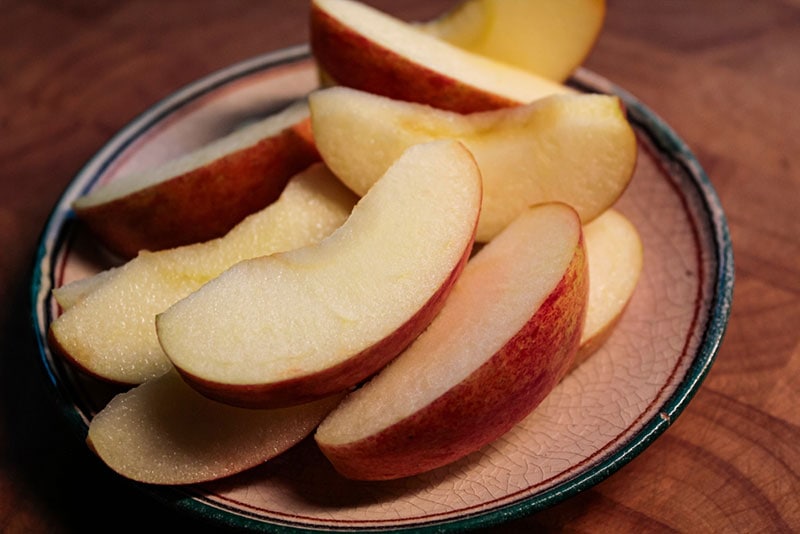Can Dogs Eat Mamey? Vet-Approved Facts & FAQ
Updated on

Mamey typically refers to the fruit from the Pouteria sapota tree, the mamey sapote. This tree is native to Mexico and Central America and the sweet fruit is popular in many Latin American countries.
The fruit of the unrelated Mammea americana looks similar and is usually referred to as ‘yellow mamey’ or ‘mamey apple’.
While anecdotally some dogs suffer no issues after eating the flesh of ripe mamey sapote, both these fruits should not be given to dogs due to the potential health risks and toxicity.
Read on to find out more about mamey, along with other safe and unsafe fruits for your pup.
What is Mamey?
The mamey sapote
Most commonly mamey refers to the fruit from the Pouteria sapota tree. Confusingly it also goes under lots of different names including mamey sapote, mamey colorado, zapote colorado and zapote rojo/red mamey. The fruit, technically a berry, is large (4-10 inches) with a soft, creamy texture and orange to red flesh.
People enjoy the delicious fruit raw or it is also popularly made into milkshakes, smoothies and ice cream. From a nutritional point of view, it is a good source of vitamins B6, C and dietary fiber but is also high in sugar.

Mammea americana
The Mammea americana tree is native to the Caribbean but also widely cultivated in the tropics and Central America.
The fruit from this tree also goes by lots of different names including mamey! These include yellow mamey (to differentiate it from the mamey sapote/red mamey), and mamey apple. It is also a large berry 3.9-7.9 inches in diameter. The flesh is orange or yellow and is edible by humans, but it is not as popular worldwide as mamey sapote.
Why Shouldn’t Dogs Eat Mamey?
The seeds of mamey sapote are known to be toxic to dogs, as are the leaves. Contact with the leaves can also lead to skin irritation. While a small amount of the ripe flesh appears to be safe for some dogs, others have suffered toxic effects after consuming it. It is also high in sugar. Overall, it is best to avoid feeding this fruit to your dog because of the potential risks.
Toxic components have been extracted from both the seeds (mammein), and peel (coumarin), of the yellow mamey (M. americana). A concentrated extract of the fresh fruit has also been reported to be toxic to dogs as well as guinea pigs and cats.
What Fruits Can My Dog Eat?
If your dog is on a complete and balanced commercial dog food, there is no need to supplement their diet with fruit for its nutritional content. However, many dogs enjoy a small piece of tasty fruit as an occasional treat. Remember any treats you give should not account for more than 10% of a dog’s daily calorie allowance, and fruits are high in sugar.
- Apples (remove the seeds)
- Bananas (peeled)
- Blueberries
- Strawberries
- Mango (skin and stone removed)
- Melon (rind and seeds removed)
- Orange (skin and seeds removed)

Which Other Fruits Should Dogs Avoid?
While there are plenty of fresh fruits that are generally safe to offer your dog, as well as mamey there are other fruits that should be avoided including:
Grapes
Grapes, raisins, currants and sultanas are toxic to dogs. They can cause gastrointestinal issues and kidney failure. Unfortunately, there is no clear link between the size of your dog and the amount of grapes or raisins eaten, so if your dog has accidentally eaten any, contact your vet straight away.
Avocados
Avocados contain the toxin persin which causes vomiting and diarrhea in dogs. Although the highest concentration is found in the pit, skin and leaves of the fruit, the flesh is best avoided. It is also high in fat and so can cause gastrointestinal upset, or increase the risk of pancreatitis if large amounts are eaten.
Cherries
Although the flesh of this fruit is not toxic the pit, leaves and stem contain cyanide containing compounds which are toxic.
Conclusion
To summarize, whichever “mamey” is being referred to, dogs should not eat it. Although some dogs may be able to eat a small amount of the ripe flesh of the mamey sapote without suffering from ill effects, it is not worth the risk.
There are many safe fruits that you can share in small amounts with your dog, but grapes, avocados and cherries are other fruits that should be avoided.
Featured Image Credit: Suriel Ramzal, Shutterstock













